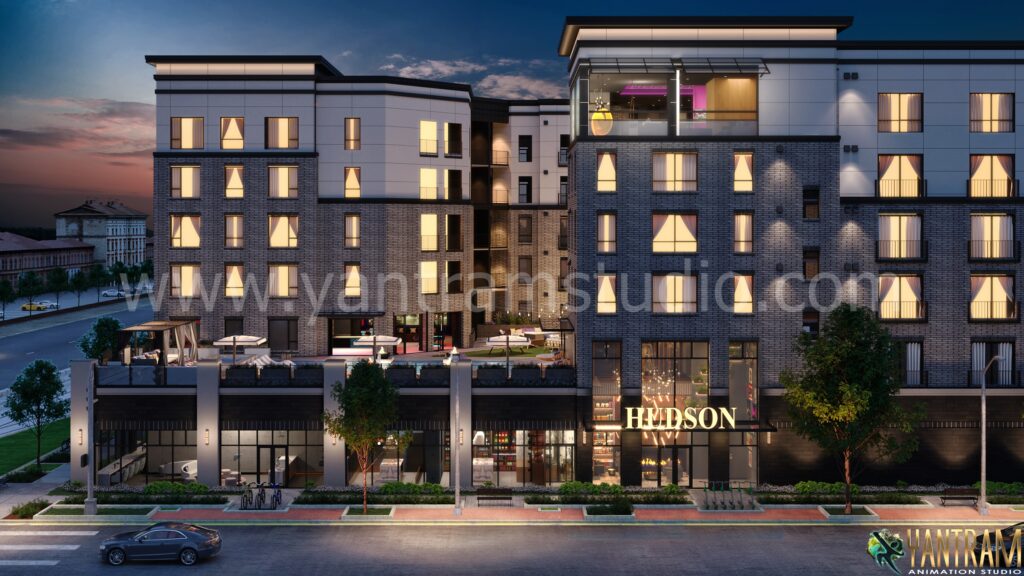An exterior rendering of a building is an essential tool for architects, designers, and developers. Not only does it help them visualize the project, but it also serves as a great marketing tool to potential clients. The key to making your architectural exterior rendering stand out from the rest is choosing the right angle. Here are five of the best angles for architectural exterior rendering that you should consider.
#1. Bird’s Eye View
A bird’s eye view is one of the most commonly used angles for an architectural exterior rendering because it gives viewers a unique perspective on the building. This angle will showcase any interesting details in the façade while also allowing viewers to get a sense of how the structure fits into its surrounding environment. It is also useful for highlighting any landscaping or outdoor amenities that may be part of the design.
#2. Eye-level View
An eye-level view allows viewers to relate directly to the building, giving them a sense of what it would be like standing right in front of the structure. This angle is great for highlighting any unique architectural features that may not be visible from a bird’s eye perspective. It also gives viewers an idea of how high the building is and how it fits into the environment.
#3. Elevated Perspective
An elevated perspective is a great choice for exterior renderings because it helps to emphasize the verticality and height of the structure. This angle also allows viewers to get an idea of the surrounding landscape and any other structures in the area. It is important to note that this angle should not be too far away as it could detract from the details of the building itself.
#4. Worm’s eye View
A worm’s eye view provides an interesting perspective for viewers because it is typically much closer to the ground. This angle can be used to showcase the building in relation to its surroundings or it can emphasize small details that may be difficult to see from a higher perspective. It is also important to note that this angle should not be too close to the building as it could detract from its overall aesthetic.
You can also Read: 3D Architectural Walkthrough for Real Estate Industry
#5. Close-up
A close-up angle is great for showcasing the detailed elements of a building’s façade. This angle allows viewers to get a detailed look at the textures and materials that were used in the design. This angle is particularly useful for highlighting interesting architectural features that may not be visible from a distance.
Conclusion
No matter which angles you choose for your architectural exterior renderings, make sure that they accurately portray your design concept and showcase all its best features in order to make them truly stand out! With these five angles as starting points, you should have no trouble finding one that works perfectly for your next project! Good luck!

